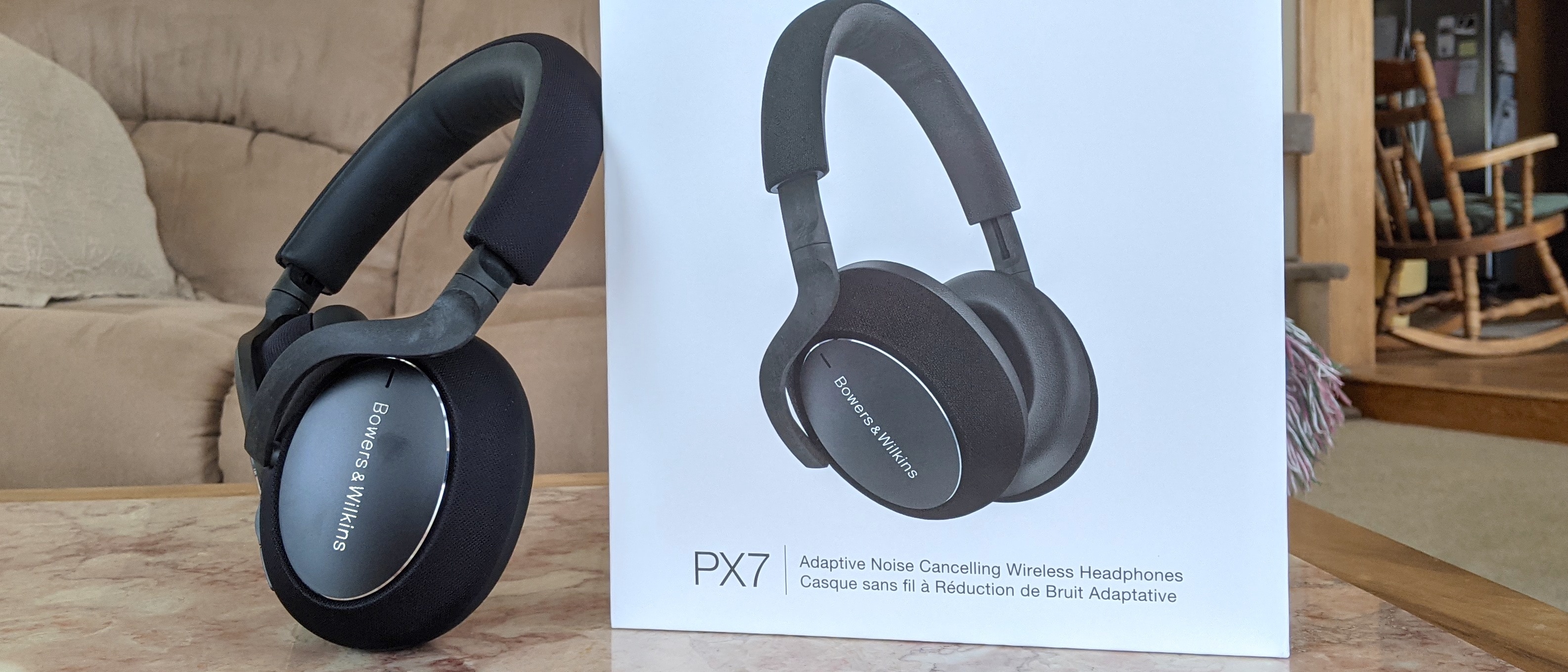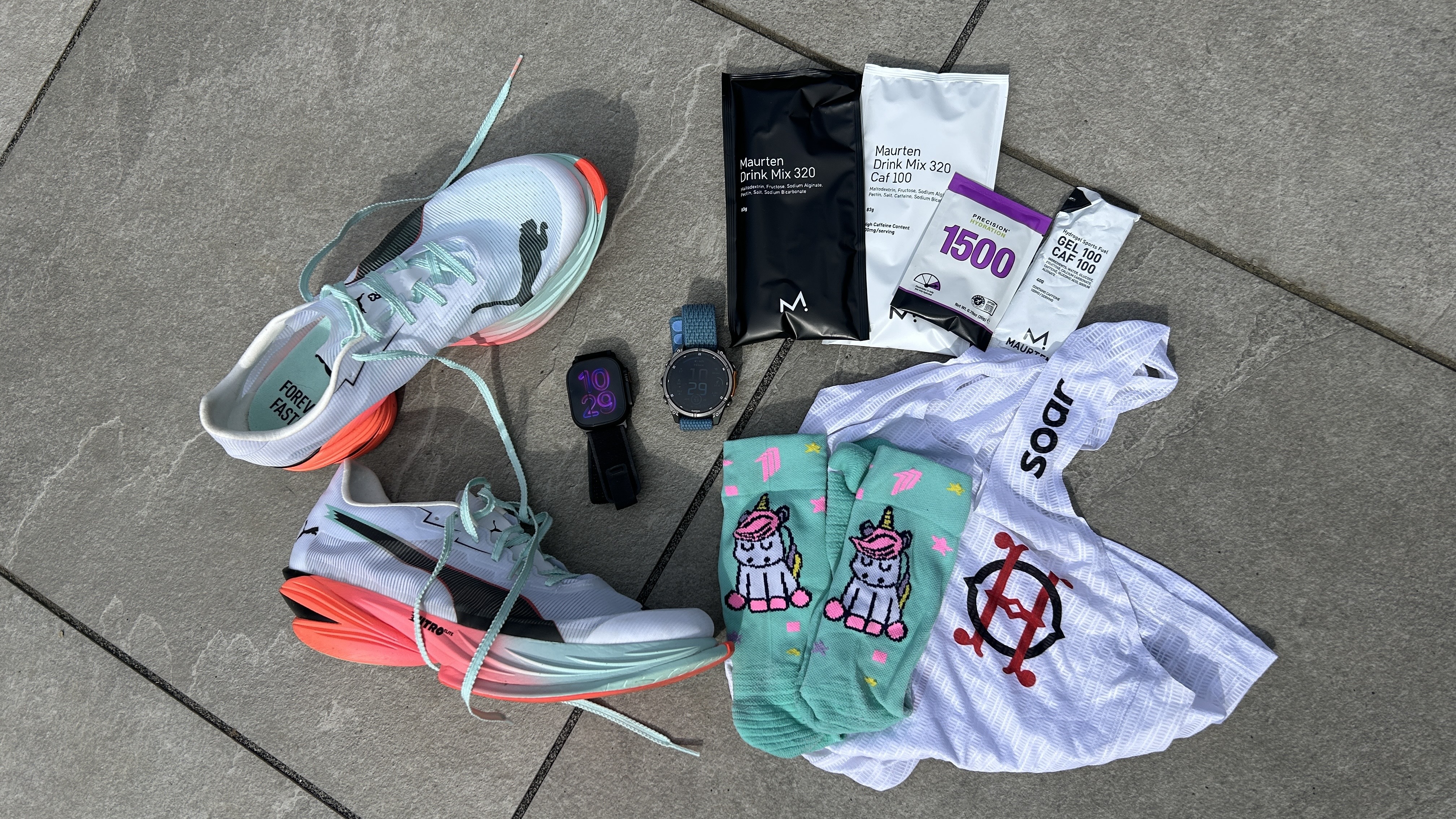Tom's Guide Verdict
At $399, the Bowers & Wilkins PX7 Carbon Edition doesn’t come cheap, but is a stellar all-around performer with a ruggedly sophisticated design.
Pros
- +
Wide and dynamic soundstage
- +
Prime craftsmanship
- +
Multi-level ANC and ambient listening modes
- +
Lengthy battery life
- +
Companion app with useful features
Cons
- -
Finicky connectivity
- -
Carbon fiber design isn’t for everyone
Why you can trust Tom's Guide
The Bowers & Wilkins PX7 Carbon Edition is an updated version on the critically acclaimed PX7. This set of stylish wireless headphones delivers the same excellent performance as the original, backed by powerful noise cancellation, responsive controls, and remarkable sound. So, what’s new? B&W adorned its flagship model with carbon fiber aesthetics that some will either love or hate, depending on their taste in design.
Colors: Carbon (black)
Battery life (rated): 30 hours (ANC on), 33 hours (ANC off)
Connectivity: Bluetooth 5.0
Processor: Qualcomm QCC5100
Size: 3.1 x 6.9 x 8.7 inches
Weight: 10.9 ounces
Yes, the asking price of $399 is steep, especially when some of the best headphones — like the Bose 700 and the Sony WH-1000XM4 — are between $50 and $100 less. But when compared to the $549 AirPods Max, well, it’s a bargain. Keep in mind too that you’re also paying for quality, which, if you’ve ever owned a B&W product, is often first rate.
- The best over-ear headphones, tested
- More of the best wireless headphones
Our Bowers & Wilkins PX7 Carbon review will explain why this special edition release (and the original) stands out as one of the best noise-cancelling headphones money can buy.
Bowers & Wilkins PX7 Carbon Edition review: Price and availability
The Bowers & Wilkins PX7 Carbon Edition is available for $399 at major online retailers, including Amazon and Best Buy, or directly from B&W. If you're looking to score these headphones for less, the original edition is currently on sale for $300 on Amazon. The PX7 is available in two colors, Space Grey and silver, while the PX7 Carbon Edition is only sold in black.
For all of the latest sales, be sure to bookmark our best headphones deals page.
Bowers & Wilkins PX7 Carbon Edition review: Design and comfort
B&W creates some of the most attractive, well-built headphones out there. Period. Check out the Bowers & Wilkins PX if you need a reminder. The PX7 is already a handsome piece of audio hardware, and as for the PX7 Carbon Edition, it’s still an eye-catcher. It has lost some elegance, though.
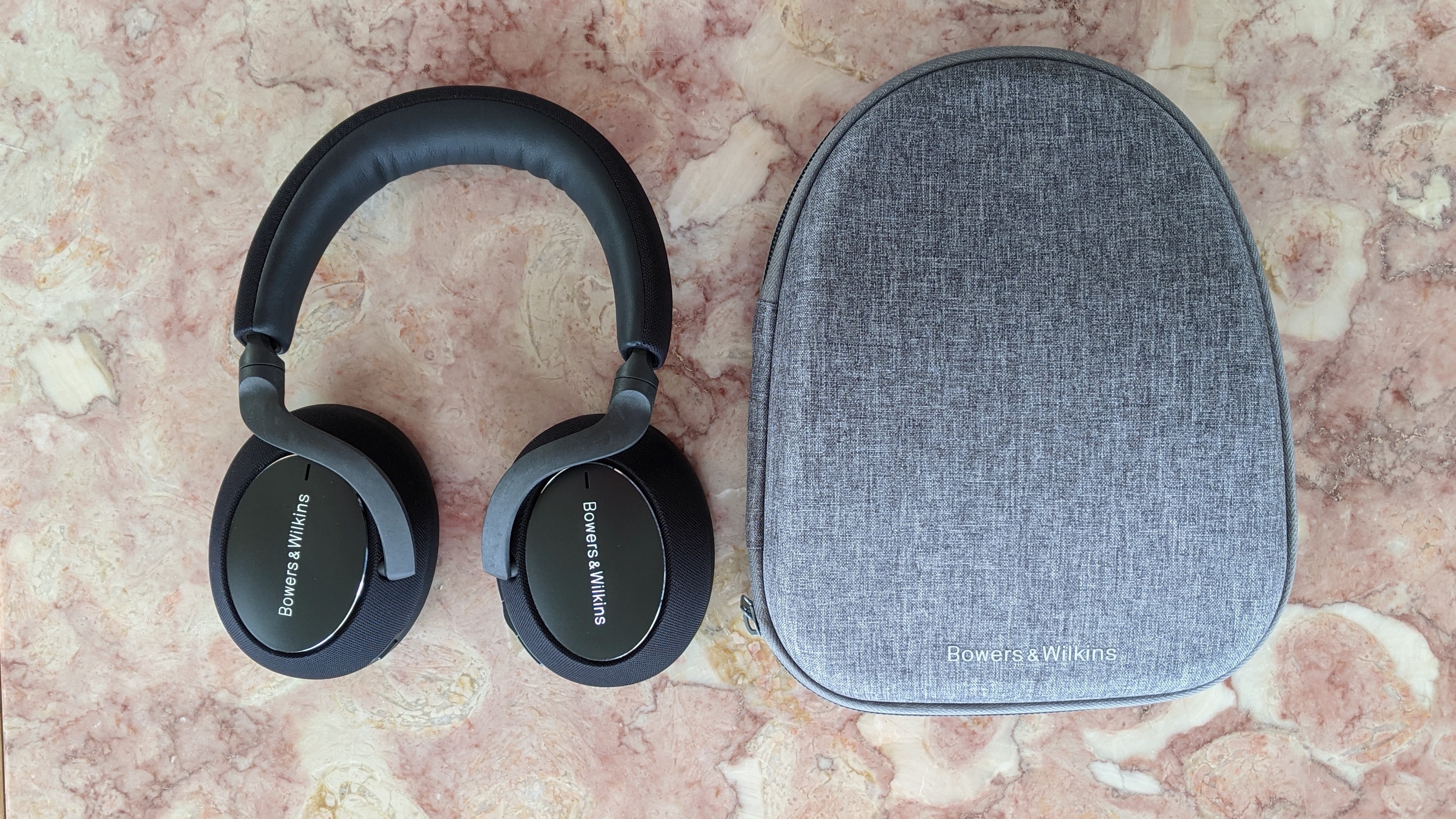
You’re still getting superior craftsmanship, as highlighted by the soft leather padding, textured woven fabric, and striking arcs that connect to the earcups. The inclusion of carbon fiber composite gives these cans a ruggedly luxe appearance, which like I said, you’ll either love or hate.
My take is somewhere in the middle. I love its sturdiness, but dislike that it attracts hand oils and has an unpolished matte finish. Don’t get me wrong; I’ll take it over the Bose 700 and WH-1000XM4’s predominantly plastic designs any day. I can also see why many would prefer the cleaner, refined presence of the original. Something else that makes this version more distinctive is the diamond-cut detailing around the plates that complement the raised metallic B&W logo.
As handsome as both the original and Carbon Edition look, the PX7, in general, isn’t flawlessly designed. There are no hinges, so you can’t fold the earcups and conveniently toss the headphones into your everyday bag. Hence the necessarily large carrying case, which also feels premium and displays the cans beautifully.
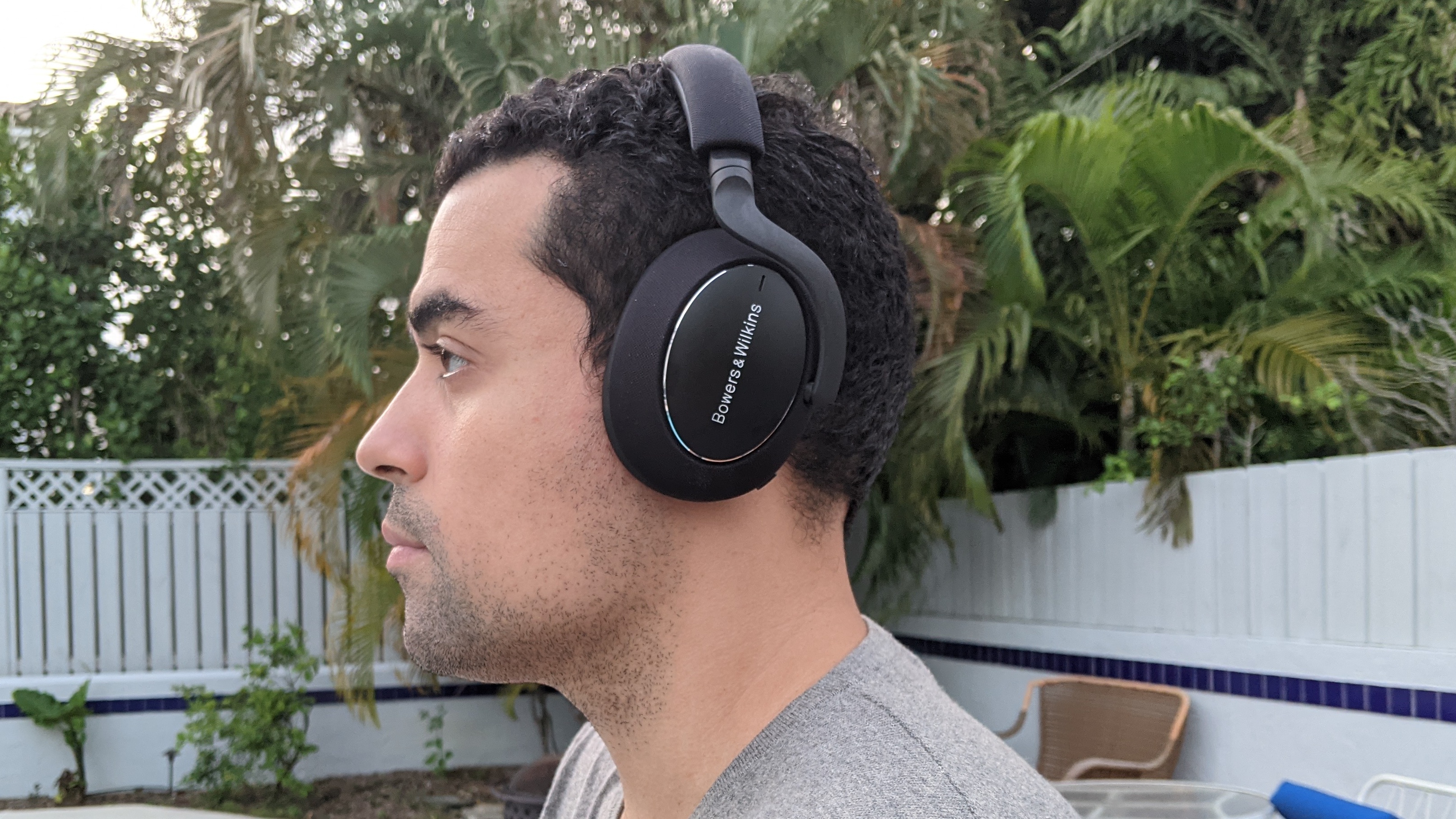
The PX7 Carbon Edition does feel lighter than its 10-ounce weight suggests. Neither my head nor neck was strained from wearing the headphones multiple times throughout the day. The earpads felt plush and rested gently on my ears, while the spacious cutouts provided plenty of breathability. You will need to adjust the extenders to achieve a stable fit and avoid tight headband-clamping force.
Bowers & Wilkins PX7 Carbon Edition review: Controls and digital assistant
I see why B&W went with physical buttons over touch sensors. It makes sense from a design perspective: who wants to leave fingerprints on the side of these beauties? At the same time, many users find touch controls to be the more practical input method. Howbeit, the company did a noteworthy job of creating the buttons for simplified use.
The right earcup has a three-button setup consisting of volume rockers and a multifunctional button for playback, call management, and digital assistant activation. Above it is a power toggle that also enables pairing mode. The left earcup has a button to cycle through the different ANC levels (1x press) or turn on the ambient sound mode. All you need to know is that the buttons produce excellent tactility, reassuring you that every intended command is being executed.
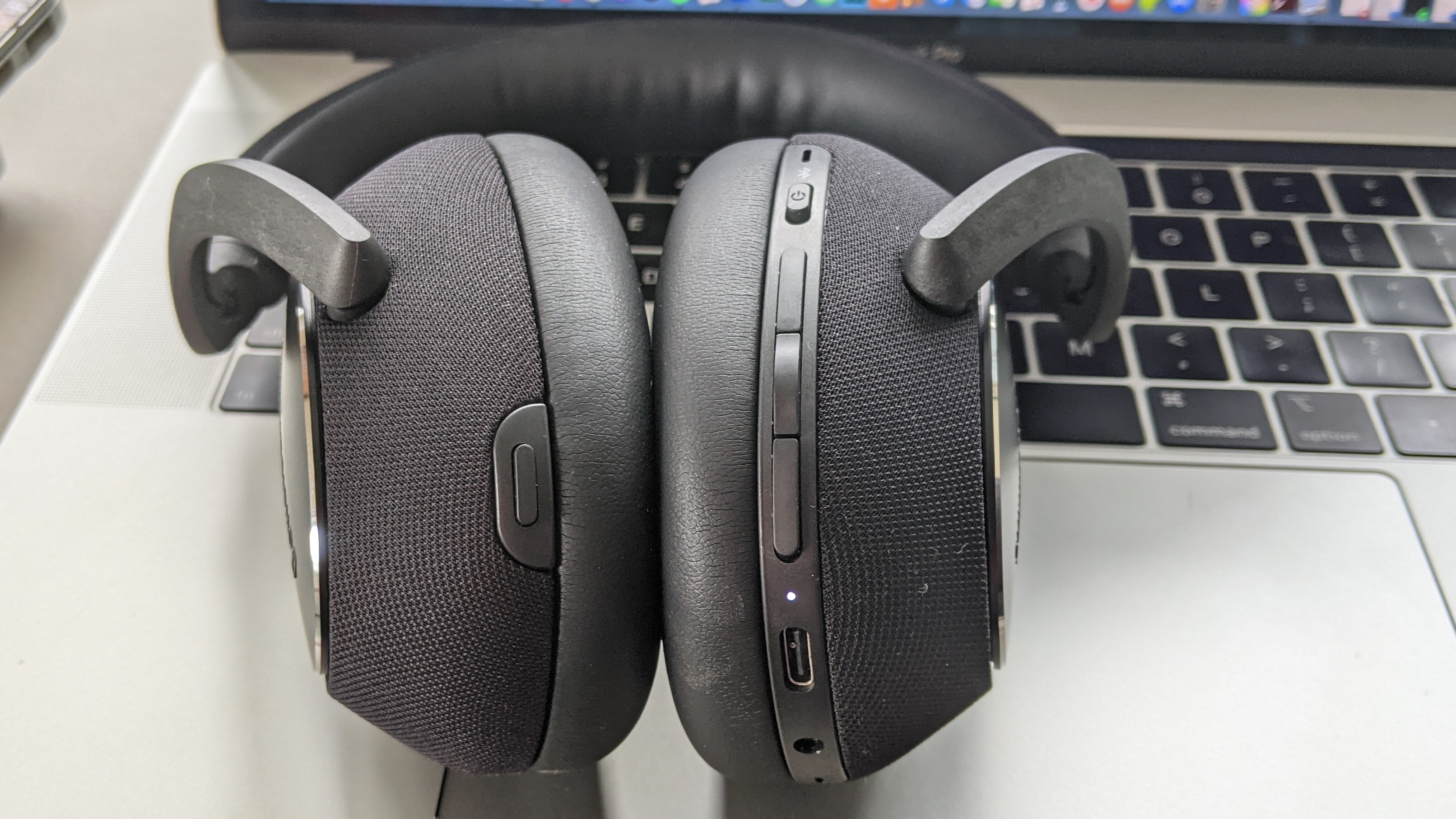
But don’t think the PX7 Carbon Edition leaves you dry of smart features. it comes with on-ear detection, which I consider the headphones; unsung feature. Why? The motion sensors are ridiculously accurate; moving an earcup the slightest bit off of your ear automatically pauses playback. You can also assign sensitivity levels (Less, Normal or More) for optimal performance.
Siri operates well on these cans. It was a breeze firing up Apple’s AI bot on my MacBook Pro and performing standard commands like “open Apple Music” or “search the web for NBA scores.” Google Assistant didn’t operate as smoothly, as there was some latency (a 2-second delay) whenever activating the feature and receiving responses. When it did register commands, the software answered inquiries with precision.
Bowers & Wilkins PX7 Carbon Edition review: Active noise cancellation
ANC on the original PX “performed well against the never-ending din of city living,” and the PX7's is a slight improvement. Sure, the Bose 700 and WH-1000XM4 are still the more powerful options, but the noise neutralization on these cans should not be understated. Even though I have yet to test the PX7 Carbon Edition on an airplane (thanks, COVID-19), I have worn it in many loud settings to get a feel for the sound-silencing capabilities, and wasn’t disappointed.
Four mics are used to block out a large number of ambient sounds across the frequency spectrum. The PX7 Carbon Edition also has three different ANC levels – Low, Auto, and High – each one engineered for specific purposes. Low increases awareness of surroundings, while Auto intelligibly adapts to environments and High deals with consistently noisy environments and flights. Having the latter as your default will get the best ANC performance.
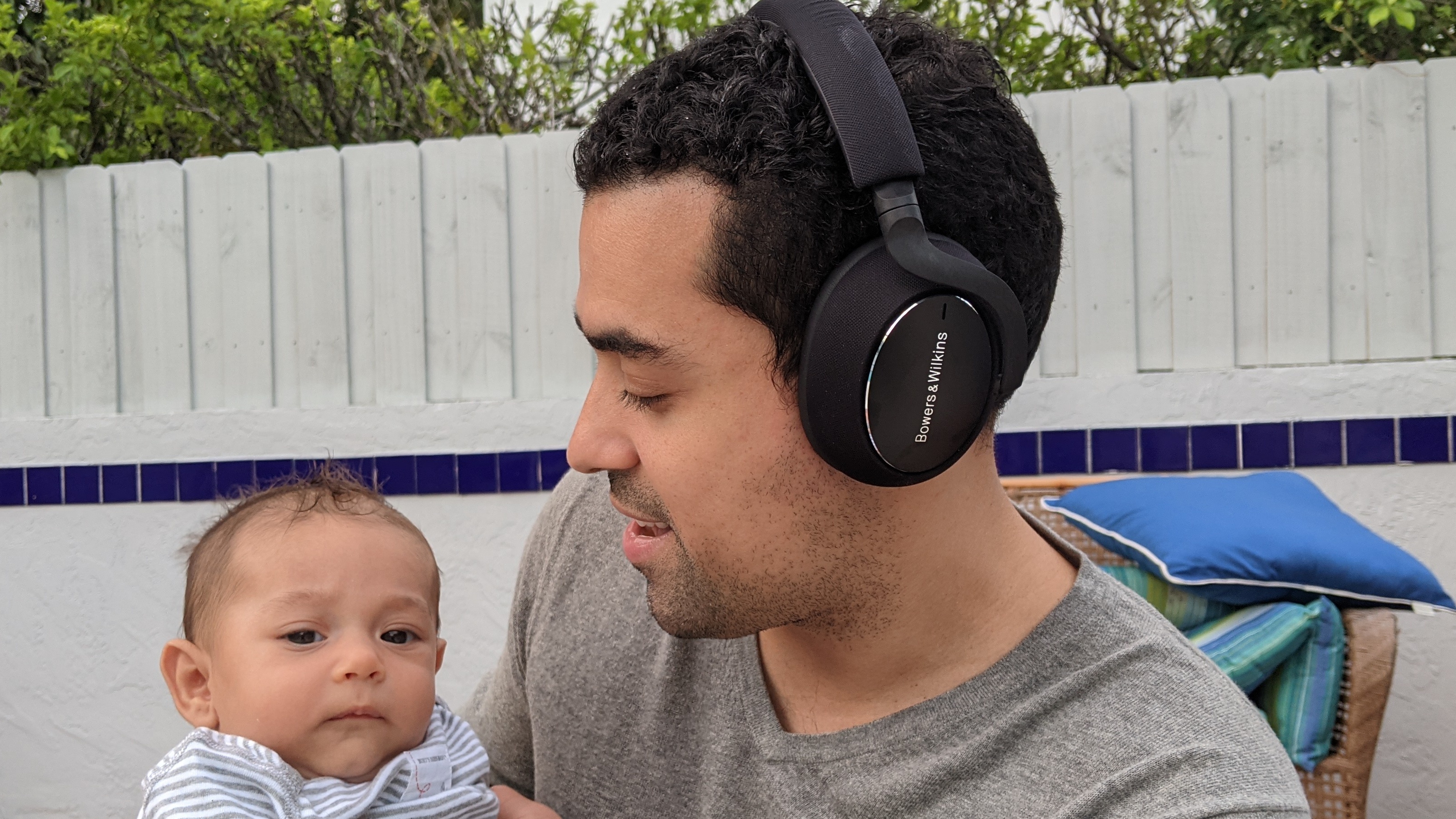
Working from home these days and sharing an office with my wife and newborn, there were moments where I either completely forgot they were behind me or in the room at all. Only when our baby boy belted out cries did I realize there was company. When using the headphones outside, loud noises were significantly minimalized. Large vehicles (e.g., buses, delivery trucks) went unnoticed and high-frequency sounds (e.g., sirens, whistles), while audible, were not distracting.
There's also an Ambient Pass-Through mode to let you hear external sounds clearly. The fact that I could hear my newborn break wind from another room tells you how strong the feature is on these cans. It’s worth turning on if you like to eavesdrop on conversations or want to know what’s happening around you, and it doesn’t compromise audio performance.
Bowers & Wilkins PX7 Carbon Edition review: Audio quality
If sound is a reflection of design, then consider the PX7 Carbon Edition sonically exquisite. B&W’s soundstage is both enthralling and wide, feeding your ears impactful bass, lively mids, crystal-clear highs. More importantly, the accuracy you’re getting from these headphones is spot-on, allowing you to hear music as artists intended, as well as identify subtle nuances in complex recordings.
Rhythmic masterpieces like the Fania All-Stars “Ponte Duro” are reproduced to perfection. I’m talking about stellar instrumental representation that has you feeling every conga tap and even smaller details like the clave strikes. But it’s the vibrant horns on the bridge that showcase the PX7 Carbon Edition’s transparency. The end result is a fine mix of blaring and mellow sounds that blend well over a comprehensively orchestral production.
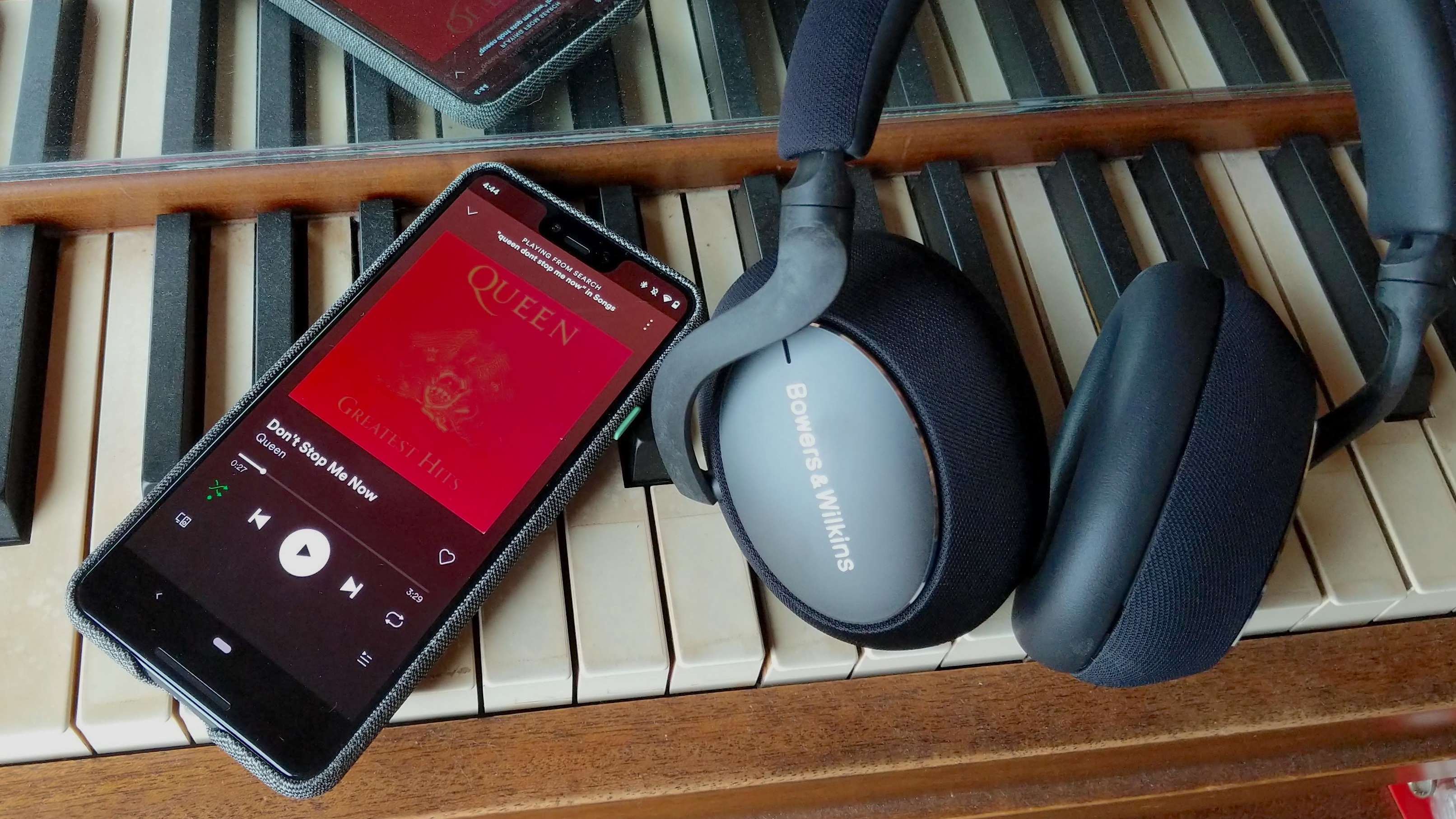
I loved how these headphones captured the infectious energy of Queen’s “Don’t Stop Me Now.” If it wasn’t the precision of Freddie Mercury’s soaring vocals, then it was the impactful snare drums that left me mesmerized. Moving on to contemporary selections, I blasted Mobb Deep’s “Shook Ones” and enjoyed how hard the iconic bassline knocked. The low end dominates the track, but what’s awesome is that the soundstage augments the noir production by emphasizing certain elements like the calm hi-hats and distant horns.
The PX7 Carbon Edition also comes bundled with an aux cable, so you can connect to any audio equipment and most portable devices (now might be the time to look around for your iPhone dongle). Using it will take the bass and volume up a notch.
Bowers & Wilkins PX7 Carbon Edition review: App and special features
The B&W app is an accurate representation of the brand’s wireless headphones: it's clean, user-friendly, and stocked with valuable features. It won’t grant you a wealth of extended functionality like the Sony Headphones Connect app, but there is enough here to enhance the user experience.
On the home screen is the Noise Cancellation toggle and the three levels you can select, along with the Ambient Pass-Through toggle and slider to adjust the amount of sound you want to let in. All other features and settings are spread out across different pages, which can be easily accessed by swiping across the screen.
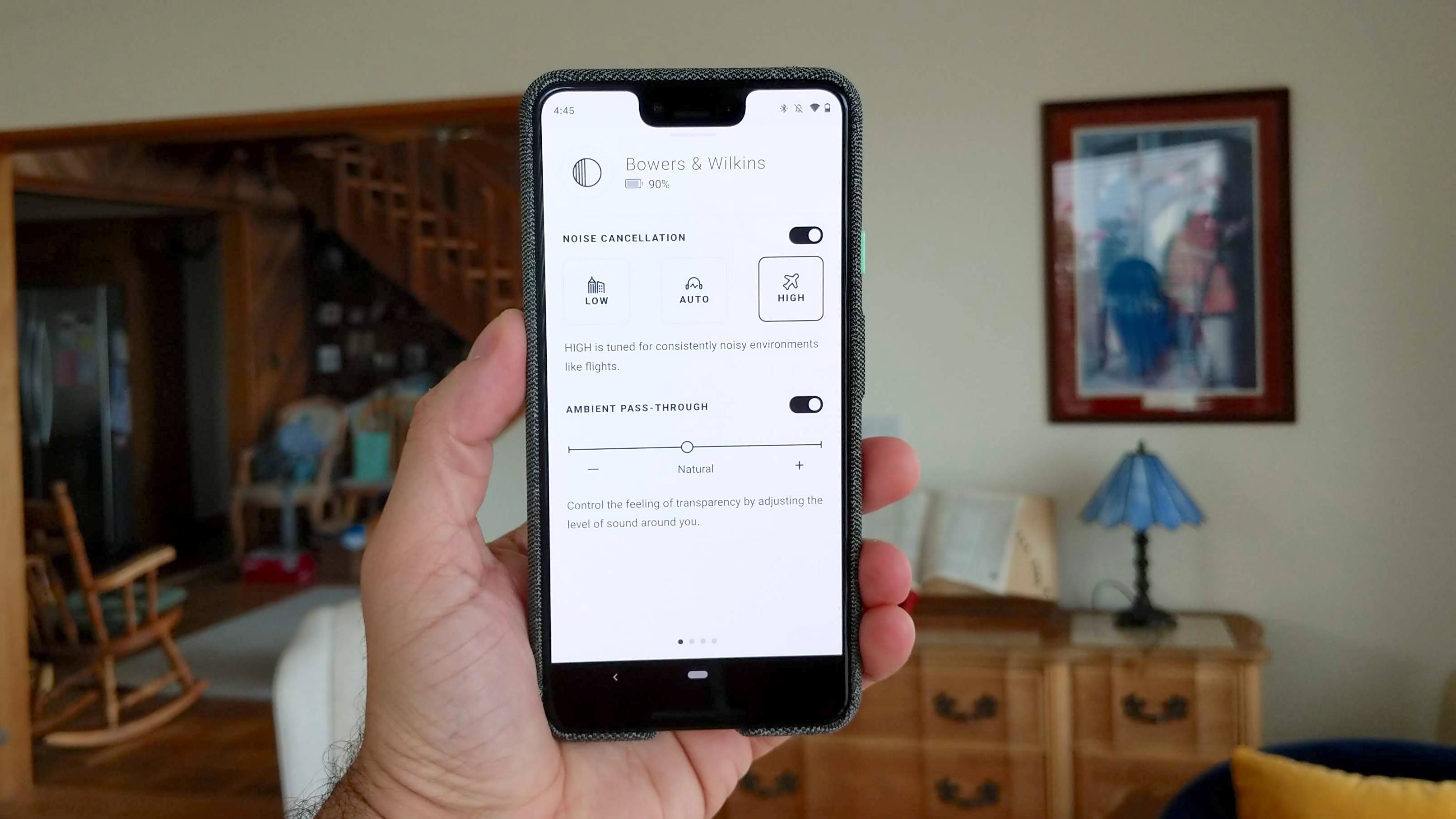
Soundscapes is one of the app’s standout features and has several sound profiles to mask the noise around you with sounds of nature. It definitely helps you relax whenever anxiety or stress hit hard. You have six different profiles that can be set with timers, so that you only temporarily disconnect from the world. There was an issue with stuttering every time I switched from Spotify to Soundscapes, but it was fixed after a few minutes in idle mode.
Rounding out the app are other toggle controls, including one for voice prompts, a Standby Timer to put the headphones in sleep mode and firmware updates. An adjustable EQ or presets would have been greatly appreciated, but B&W evidently felt its sound profile was more than enough to satisfy listeners’ ears. No argument there.
Bowers & Wilkins PX7 Carbon Edition review: Battery life
B&W rates battery life at 30 hours with ANC on, 33 hours with ANC off. By comparison, this is identical to what the WH-1000xM4 offers (30 hours) and is 10 hours more than the Bose 700 (20 hours). Factor in the special modes, streaming, and high volume, and you get a realistic playtime of about 28 hours. That is sufficient for an international flight across the globe or a month’s worth of moderate listening. Having used the headphones for weeks, they’ve only needed to be recharged once.
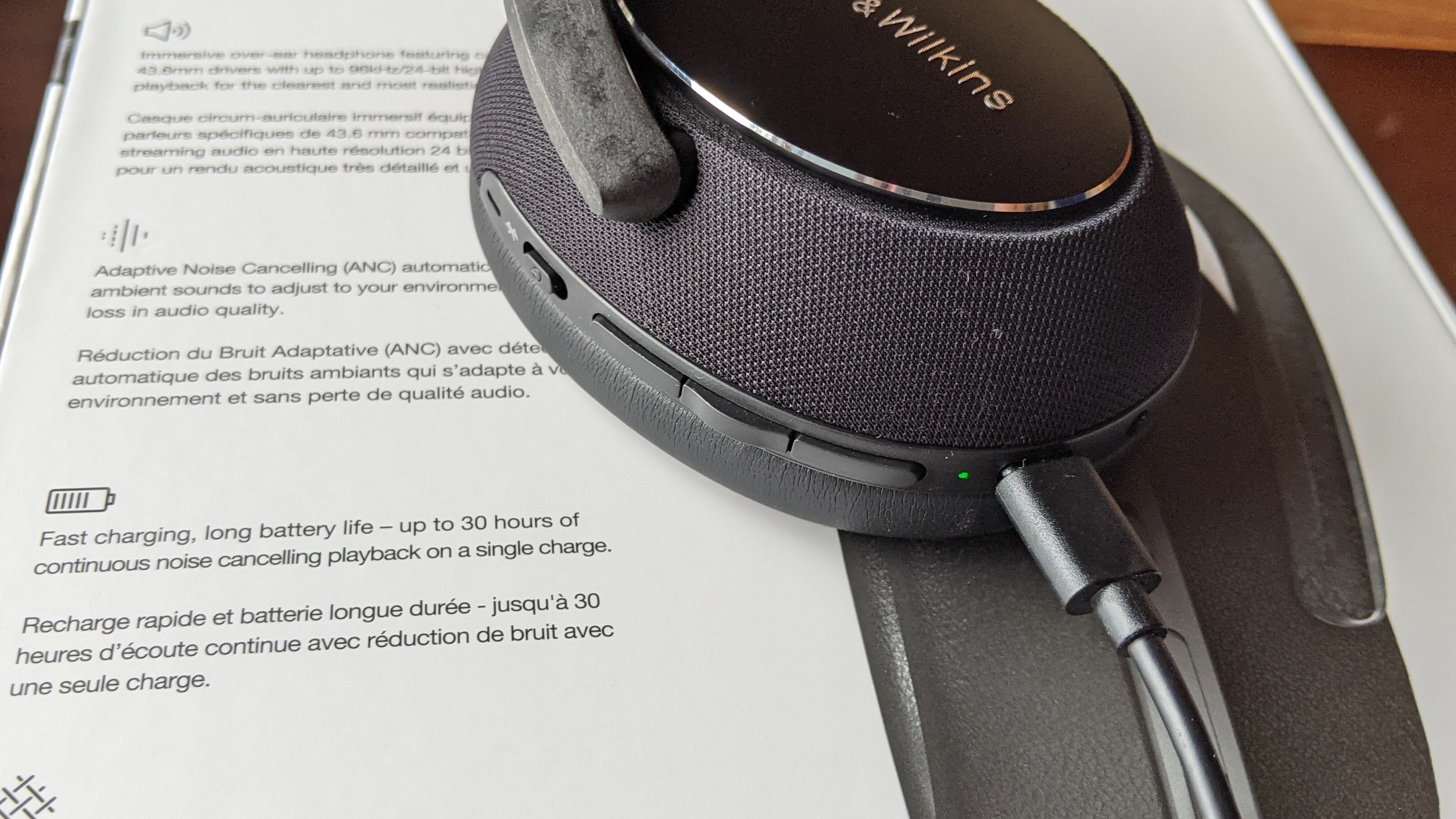
Fast charging is available to speed up the charging process: 15 minutes equals 5 hours of use. The WH-1000XM4 gets you the same playtime in 10 minutes, but you won’t even notice the longer wait time. I would have loved to see B&W either bundle or sell a charging case for the PX7 Carbon Edition, much like Bose did with the 700, or integrate wireless charging like the Marshall Major IV.
Bowers & Wilkins PX7 Carbon Edition review: Call quality and connectivity
The PX7 Carbon Edition is a decent calling headset that works best indoors. Clients found my voice loud and crisp over Zoom conferences, while my wife mentioned that she could hear everything I said fairly clearly during a grocery run. Outside is where call quality dropped, as the missus heard lots of muffle which was caused by wind and speeding cars that drove by the house.
Bluetooth 5.0 made pairing to my devices seamless. Re-pairing was even faster, as both my MacBook Pro and Google Pixel 3 XL instantly recognized connections whenever powering on the headphones. Range was long as well, granting me 37 feet of wireless listening before stuttering occurred.
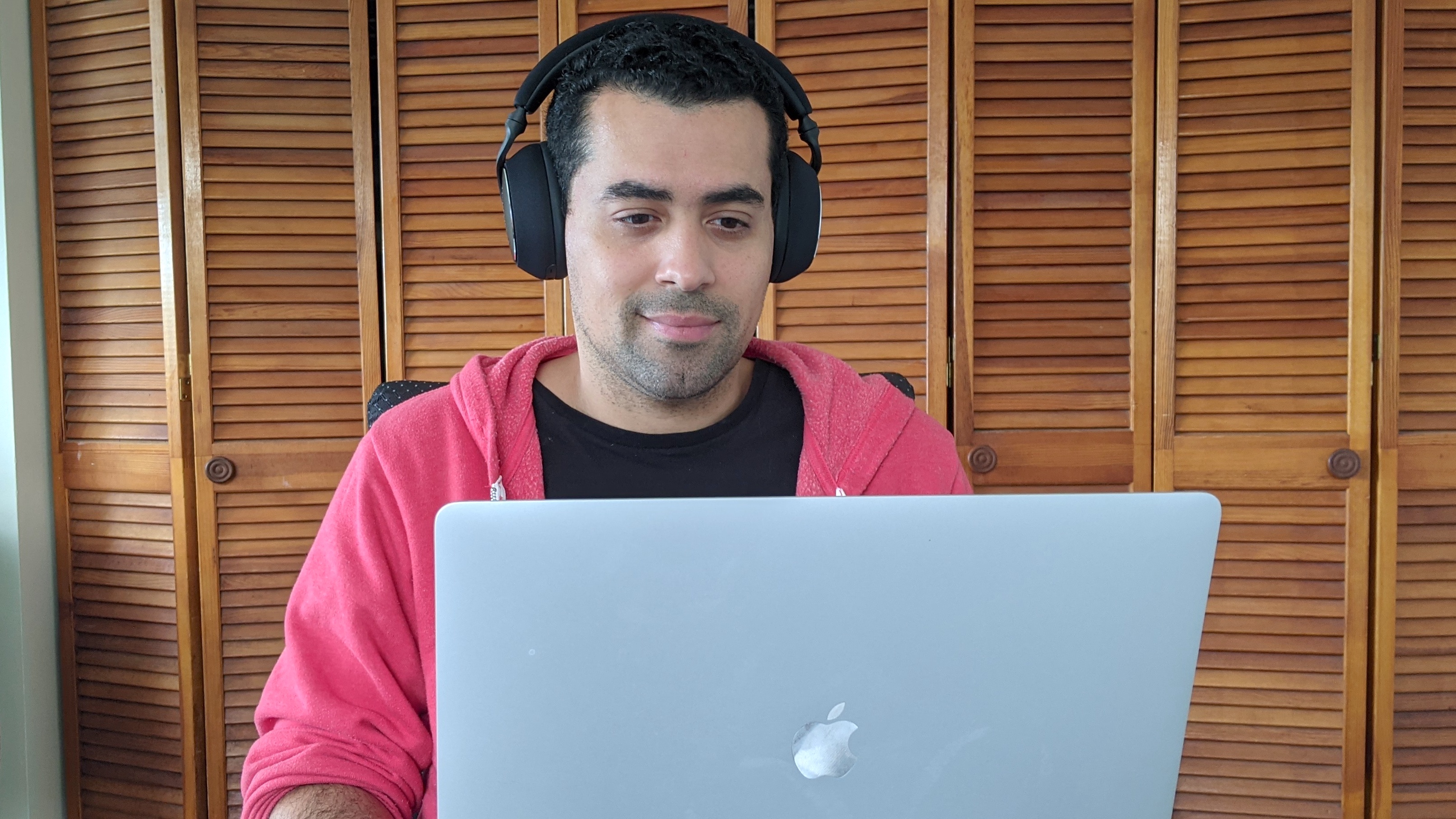
Something else that B&W doesn’t advertise is that the PX7 Carbon Edition supports multipoint technology: you can pair these cans to two devices simultaneously. It’s always relieving to hear that you can play Spotify on a laptop and control playback on a smartphone, and vice-versa, but the feature does have issues. Audio would either stop or stutter incessantly when listening to music or using Soundscapes. Maybe a firmware update can help fix this.
Bowers & Wilkins PX7 Carbon Edition review: Verdict
In a competitive noise-cancelling market where Bose and Sony run the show, Bowers & Wilkins let its presence be known with the exceptional PX7 Carbon Edition. These headphones have the ANC and audio prowess to match up well against most, if not all competitors. Functionality is extensive, thanks to multi-level listening modes, singular features, and intuitive mics that offer great speech recognition for calls and digital assistance. Then comes the design, which is sophisticated, with or without the carbon fiber exterior.
You would think that such praise would earn these cans a perfect score? Not quite. The PX7 Carbon Edition isn’t perfect: there are issues with connectivity, as well as some bugs that hinder wireless performance. And, again, the carbon fiber design isn’t for everyone. I also understand that not everyone has B&W money to spend; the brand falls in the luxury audio category, whereas Bose and Sony are more consumer, sub-luxury.
However, if there was ever a time to splurge on elite noise-cancellers, then the PX7 Carbon Edition deserves consideration. Remember too that the original model can be had for $300 and it not only offers the same performance, but is also cheaper than the 700, AirPods Max and WH-1000XM4.
A lifestyle journalist with an affinity for consumer products, Alex has over a decade of experience and has worked with popular publications such as Complex, Thrillist, Men’s Health, Gear Patrol, AskMen, and Hoop Magazine. He currently focuses on audio, reviewing the most coveted headphones in the market for both Tom’s Guide and Laptop Magazine.
